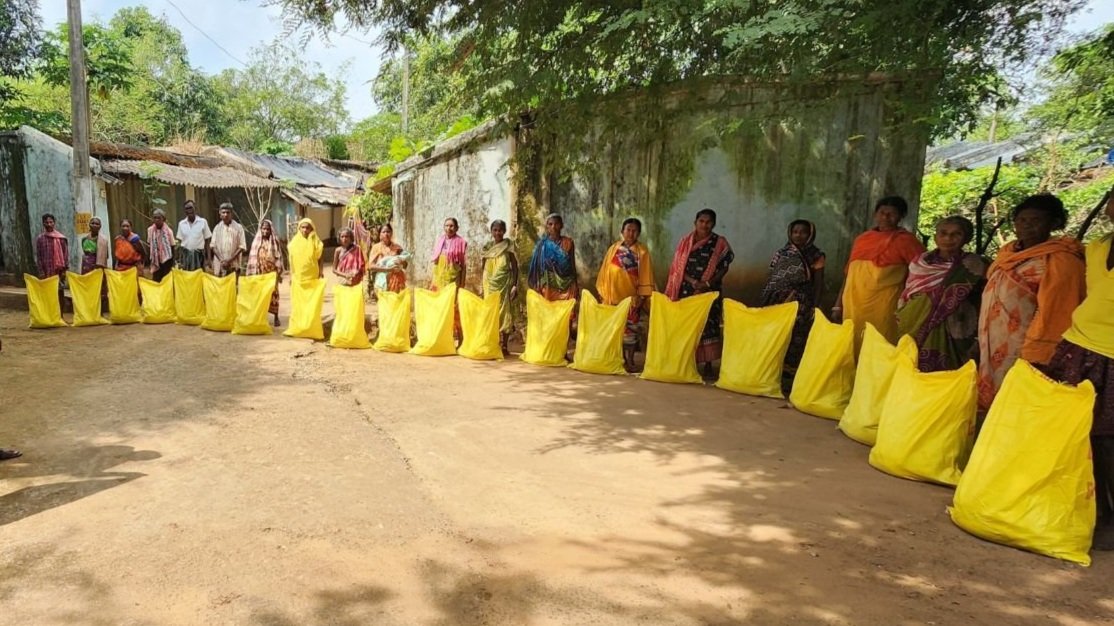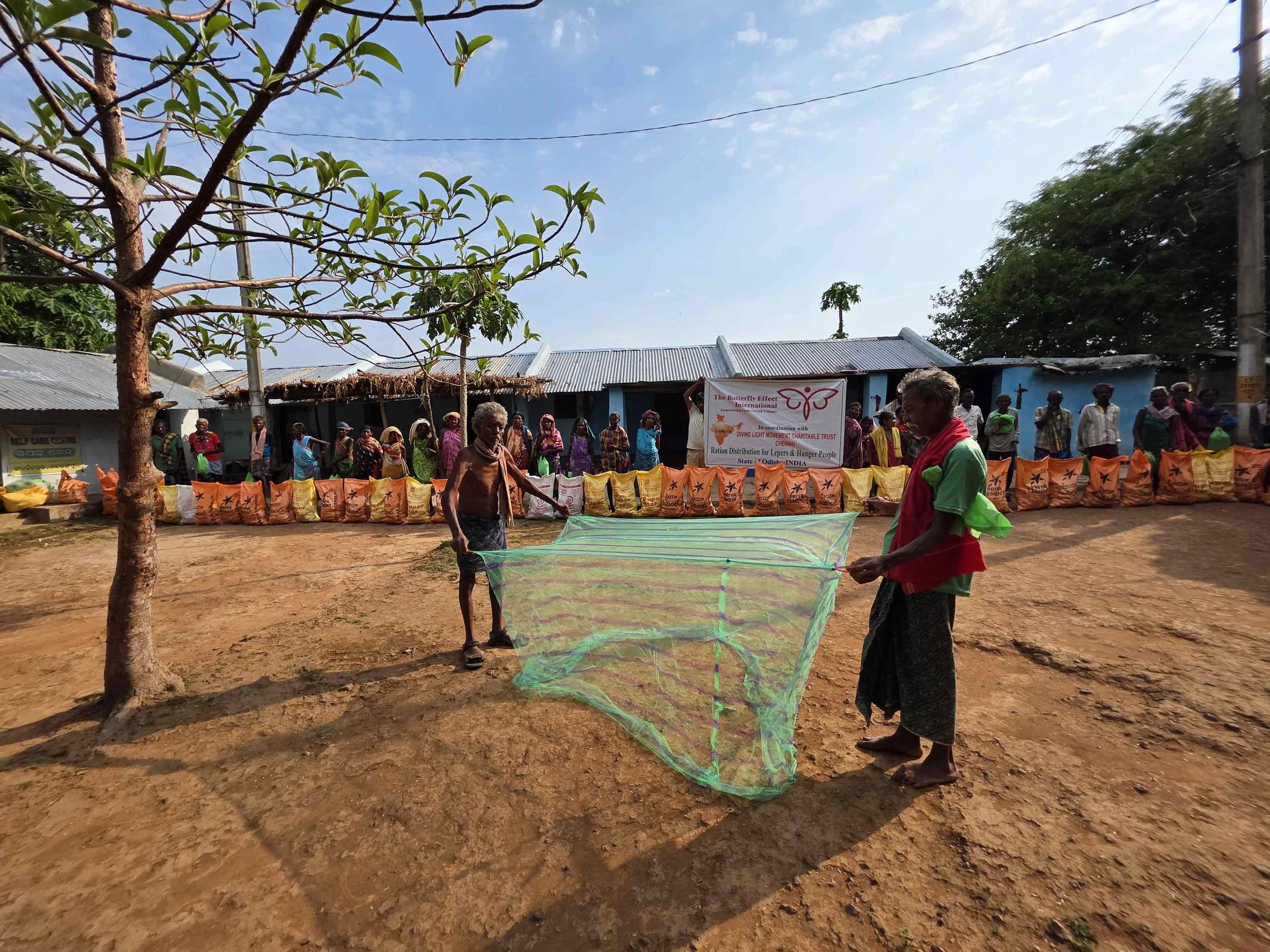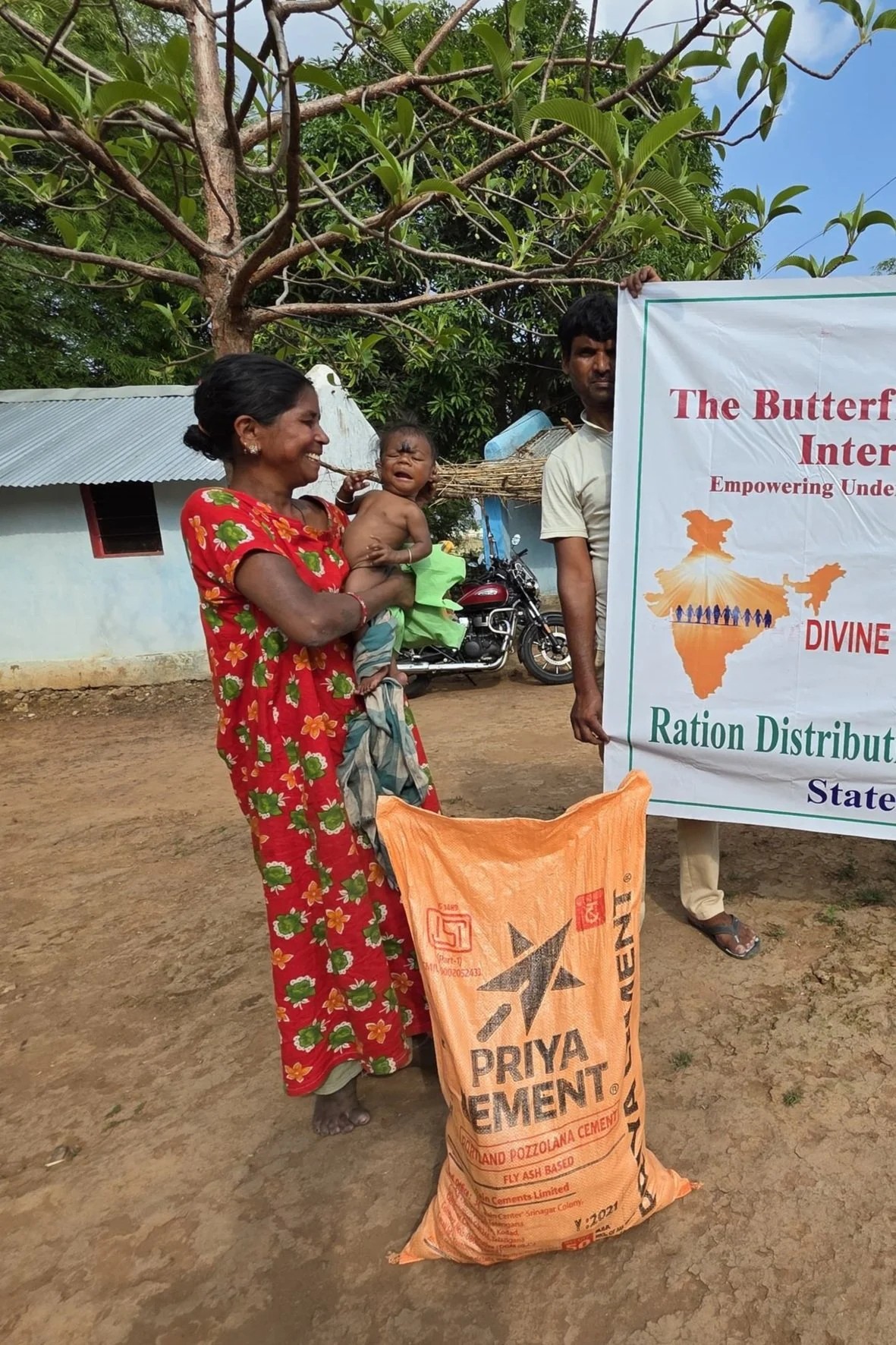Leprosy Colonies
Leprosy, also known as Hansen’s disease, remains a public health concern in various parts of the world.
Despite being curable and not highly contagious, the disease continues to affect thousands annually, and the stigma associated with it persists, leading to the existence of leprosy colonies in some regions.
At The Butterfly Effect Global, we have been deeply moved by and blessed to support residents of two leprosy colonies in Odisha, India—the country which bears the highest burden of leprosy in the world, accounting for more than 50% of all new cases globally each year.
Leprosy Quick Facts
-
There are approximately 200,000 to 250,000 new cases of leprosy reported worldwide each year.
Nearly 6% of new cases occurred in children, indicating active transmission.
According to the World Health Organization, India reported over 114,000 new cases of leprosy in 2022.
-
Despite medical advancements, stigma surrounding leprosy remains a significant barrier:
Legal Discrimination: Nine Indian states still have laws on the books that discriminate against people with leprosy (e.g., denying the right to run for public office or file for divorce).
Social Exclusion: Individuals cured of leprosy often face social ostracism, leading them to reside in colonies or isolated communities.
Discrimination in education, employment, marriage, and housing persists, despite laws being in place to protect those affected.
-
Treatment: Leprosy is curable with a multi-drug therapy regimen, typically lasting 6 to 12 months. Early diagnosis and treatment can prevent disability.
Contagion: The disease is not highly contagious; approximately 95% of the population has natural immunity. It requires prolonged close contact to spread.
Within the Colonies
Many leprosy-affected individuals are forced to live in segregated colonies due to social and employment exclusion, disfigurement, or fear of violence. Entire families, with children and grandchildren, grow up in these colonies, trapped in the cycle of poverty and stigma.
Living conditions in India’s 750 leprosy colonies can be extremely harsh, particularly in impoverished or neglected areas. They often lack basic infrastructure like beds, sanitation, clean water, pest control, healthcare, and steady food supplies. Individuals are nightly forced to sleep on the ground, facing many perils including:
Common Dangers
-
Rats can pose serious threats, especially when people have reduced sensation in their limbs due to leprosy-related nerve damage.
They may not feel bites or injuries, increasing the risk of infection or further complications.
Rats also carry diseases that can be deadly in unhygienic environments.
-
In rural or forest-adjacent areas, snakes are a real danger.
People sleeping on the ground, often without shelter, are vulnerable to bites.
Like with rats, those with nerve damage may not even feel a bite immediately, delaying critical treatment.
-
Inadequate drainage or flooding can saturate the ground.
Sleeping in wet conditions increases the risk of fungal infections, hypothermia, and skin diseases.
It also worsens the already precarious health of individuals with weakened immune systems or open wounds.
How We’re Reshaping Lives
We believe every human being deserves to live with dignity, health, and love. People affected by leprosy are not just patients — they are parents, artists, laborers, and dreamers who want to live with dignity. Many have lost fingers or eyesight but still work tirelessly to support their families. Our mission is clear: to restore hope, health, and humanity through ongoing support and compassionate care. Butterfly Effect Global’s current provisions include:
• Monthly Food Rations: to relieve hunger and nourish bodies
• Life-saving Medications: to treat and heal leprosy
• Mosquito Netting: to prevent disease and offer restful sleep
• Monthly Doctor Visit: to provide vital checkups and medical care
• 4 New Duplex Homes: in construction to provide a safe, dry refuge from the elements
• Gifting Mattresses and Bedding: to lift elders and children off the ground
Most importantly, we have an action-centered promise to walk alongside them with compassion and consistency. This is not charity. This is love in action and dignity restored.
Help Give Renewed Peace
Your donations to our leper colonies means safer living conditions, the ending of suffering, and often literally mean lives are saved.
Off the Ground 2025:
Campaign to fund 90 safe, clean beds—so every person in the leprosy colonies we support can sleep off the ground with dignity, protection, and comfort.
$150 = 1 durable bed with a clean mattress, pillow, and cover sheets
OTG Current Status
Providing 90 Beds to Lepers in Odisha
Join OTG 2025 to help us reach our goal. You’ll be able share with family, friends, and co-workers to encourage and challenge each other in the spirit of giving.





